This is the Prelude to the
MYANMAR DIARY
being not only an account of my travels to Myanmar, but also a record of the production of Gavin Wynn’s ”Magyithee La,” an independent feature film. In between all that we shall have a few meditations on the state of micro-budget filmmaking, local customs and travels, and perhaps other diversions.
The Diary begins before it should; there is a lot of information to cover before anyone gets on a plane.
In the weeks preceding 4 November 15, my departure date.
Somehow I am on my way to Myanmar, formerly Burma, to help Gavin Wynn shoot his first feature film. The project was, fundamentally, mad. There was no script, merely an outline. There was no cast. Locals, all non-actors, would be chosen. No one on the crew speaks Burmese; we would be relying on translators. We had 21 days to shoot.
That’s a bit of a startling opening, and it may help to clarify a few things.
Gavin Wynn is an old friend who I first knew as a student of Bob Davis’s at Cal State Fullerton. This was before I started teaching there. Gavin was one of Bob’s most promising charges, part of a rather unusually dedicated and fairly sharp group that Bob shepherded through the nascent filmmaking program there. I had met Gavin at a screening of his final student project, which I found unusually confident and capable for a student film. At the time it seemed like Bob was really on the way to developing a first-class program at CSUF, and these students were clear proof of that.
This initial meeting developed into a stable and loyal friendship over the years. So much so that when I began to get serious about film projects and began shopping around for a cinematographer, I thought to work with Gavin, who had been trying to get a DP career going. Gavin shot “Anna,” and “Art is Beautiful” for me. He and I began to buy camera equipment together which we then rented back to television production companies he worked for.
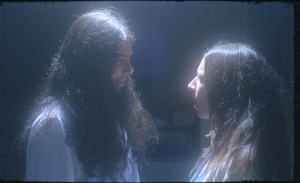
The opportunity to purchase gear together we could not afford singly became the crucial step in beginning the Millionaire documentary. We purchased a Sony EX-3 (then almost brand new; this was back in 2010) and the associated gear necessary to rent it out to “Modern Family,” where Gavin worked. None of us knew the show would go on so long or that they would rent it from us so often. The package not only paid for itself several times over, it paid for the documentary.
After the craziness of the Millionaire shoot, wherein I dragged Gavin up and down the eastern seaboard and made him set up quick and dirty interviews for days on end (sometimes as many as 4 or 5 a day), I certainly owed him. Gavin did everything for me without pay, and was physically taxed the entire time. He never complained.
So, naturally, short of announcing that his next project would be set in Hell, (and maybe even then, because I’d have to think about it) I was game for whatever he had in mind.
The Project
What Gavin had in mind was to shoot a micro-budget film in Myanmar, a country his father had grown up in when it was still called Burma. Eric Wynn’s family were prominent in the town of Maymyo, now Pyin Oo Lwin. It’s a town in the highlands, roughly located smack dab in the middle of the country, and is most known for being a British enclave since the UK claimed Burma as one of its most prosperous colonies. Thus the young Eric Wynn grew up speaking English first and listening to crooners like Cliff Richard and Johnny Mathis on the radio.
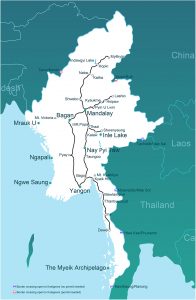
On a visit there with his father, Gavin wrote up a general idea for his film, centering on an annual hot air balloon festival they hold in Pyin Oo Lwin. The festival is called Tazaungdaing, and it signals the end of the rainy season in Myanmar. It involves the release of a hundred or so 20 ft. tall hot air balloons, powered by wood fires and many containing rafts of fireworks. Pyin Oo Lwin hosts one of only two such festivals in the country.
Gavin had been reluctant to provide an actual script for a couple of reasons. The first is that he does not think of himself as a writer. The second is that since the film would be in Burmese he did not want to have to worry about translation issues. He’d rather write a scenario and develop the dialogue as he went along with the translator. Unfortunately, as of October, there was not even a cogent outline.
As a condition of an application to the Rotterdam Cinemart program, Hae-Jin and I hastily developed one, so we went into this project confident that we had the ingredients necessary for a solid story, if not the actual text.
What could go wrong?
Well, now, that was a bit disingenuous, writing that, because now you will think everything went wrong and that this shoot was a disaster. Nothing is further from the truth. I do mean to create in you a rather uneasy feeling about the indeterminate nature of the project, though.
Ah, yes, lovely indeterminism! Perhaps Gavin never put it into such terms directly, but this film would have several creative aspects under no control whatsoever. Just as an avant-garde composer leaves much of the sound of his piece up to the whims of the orchestra and the instruments that happened to have been assembled (Morton Feldman, I am calling you out), we would have a film that was somewhat uncontrolled. But then again, a documentary is already such a film, right? The documentary is unrehearsed, unstated, only following a rough idea of what is to come. Gavin and I had already shot a documentary together and he had experience shooting an award-winning film, “Miss Navajo.” So we were all feeling fine about nothing being nailed down right now. Provided, that is, that we stuck to the plan.
Which plan could be summarized in the following manner. We would shoot, in 21 days, a narrative feature film (at least 90 minutes completed). The story was about a young girl who takes care of her grandmother. After a bad fall, grandma is invalid, and the girl must give up school to care for her. The ghost of her father appears and encourages her to do so, even though we get the feeling this is bad advice. She finds some solace and relief at the balloon festival where she meets up with the ghost one last time. As they talk, finally understanding one another, a strange transformation takes place. She becomes the ghost and he, the living person. We follow him home, to the same house and same grandmother, only ten years earlier, before the girl is born. We see the roots of the girls’ situation in the dreamy wandering of her father, the stoic practicality of her mother, and the hope and promise they share before their child is born. We end on the parents’ embrace, right on the cusp of everything going wrong.
We knew we would end up modifying this quite a bit, but we felt sure that this template would serve us well, and it turns out that it did.
Preparations
We spent the first part of October gearing up for the shoot. We bought a raft of new and inexpensive equipment. We researched how we were going to transport it. We did tests, not only for technical purposes, but to work out aesthetic issues. We spent the better part of a week just packing the gear in cases. We were like a coiled serpent, ready to strike.
And who were “we?” Well, there was Gavin, of course. Hae-Jin was acting as producer, owing to her ability to stay on top of things, maintain organization, keep track of money, and boss us around. To her chagrin she would also be called upon for miscellaneous duties that would include hair and makeup, costumes, and art direction. Before we left she even got a crash course in creating bruises from our friend (and “Face-Off” contestant) Rod Maxwell so she could handle Grandma’s onscreen infirmary.
Operating camera was Sean Jui, Gavin’s school chum and frequent collaborator. Sean was the lead on many technical issues, including a rather ingenious scheme for outfitting low cost LED light fixtures with battery packs and running our camera and video recorder off the same portable power source. Because oh, did I not mention this? We will not have reliable power sources for this shoot. Neither indoors nor out. Not only would our kit have to be lightweight, it had to be completely self-contained.
Because Gavin and Sean wanted to use extremely wide angle lenses but also wanted to trick out an extremely shallow depth of field, they would need a camera assistant to pull focus. I suggested my old friend and former student Minshi Wang, who had been working in the Taiwanese film industry. My confidence was high in Minshi, even though the others do not know him as well, and even though the tiny depth of field scared Minshi a bit.
What does that leave me to do? Sound, of course. This prospect had not appealed to me. Sound is something I do reasonably well, which is to say better than anyone else in the group, but probably not good enough to be employed doing it. Which is just as well, because I would not really want to be employed doing it.
As it would turn out, Minshi had been doing far more sound than I had, even winning a Golden Bell Award, which is Taiwan’s version of the Emmy. He could easily have done my job better than me, but we did not know this yet.
When I had Gavin work with me on my films I was at least appealing to his interests, but in the present case I was merely The Guy Who Can Do Sound Since No One Else Wants To Or Knows Much About It. It’s a fairly thankless job as well, requiring more patience than anything else. Since we were not exactly playing to my strengths, I felt I needed to be extra vigilant about the job and perhaps things would turn out OK.
Gear
Have you read “Moby Dick?” Large expanses of the book are dedicated to windy explanations of 19th century whaling techniques. It’s fascinating to some (I count myself in that number) and a dead bore to lots of high school kids who read the book. Consider this next bit my contribution to the genre. This is the “whaling” section. As such it will appeal to some, but if technical stuff bores you, you may wish to skip ahead.
We would originate on the Sony a7s, a mirrorless DSLR-form camera. The “mirrorless” part means just that – there actually is no “R” in this DSLR, it’s just a DSL. The mirror in a camera is for diverting light to the eyepiece, so you can see exactly through the lens. This was important in still photography with film, but has become a lot less important to digital equipment.
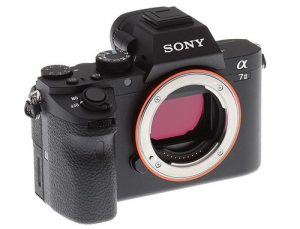
Not having the “reflex” portion means there is no physical mirror shutter in the camera, and thus the manufacturer can make a shorter, more compact body. This would affect the depth of field characteristics of lenses used. We regarded that change as a positive one, allowing us to get the small depth-of-field we wanted. The a7s is also known for two other significant factors: full-frame aperture and sensitivity to light.
A full-frame aperture is less common in the world of digital cinematography at the low-cost level, and it required us to be rather careful about which lenses we used. Lenses made for a smaller aperture would show defects or even pick up dark areas from the barrel of the lens.
The sensitivity issue was clearly a plus; we could get away with insanely low levels of light. Since we were interested in shooting by battery-powered LED fixtures that we cooked up ourselves, this seemed like a good choice. It was also a bit of a danger, as low light levels often mean an increase in gain and electronic noise. We would still have to be careful.
The internal recorder of the a7s is adequate, but does not allow for a 4K image. The a7s stores information on tony little media cards, and the write speeds to those cards is not fast enough to capture an image that is more than standard HD, which is 1920×1080 pixels.
4K, if you have been following lately, means a lot of things to a lot of people, but it generally refers to a resolution we identify with cinema, rather than HD. A 4K workflow was necessary if we were going to show this at any festival in any theatre.
Fortunately the makers of the Atomos Shogun external video recorder had pretty much designed their product around the a7s for this very reason. This extra device would take the HDMI output from the a7s chip and feed it directly into a 4K recorder that would capture the image at 4:2:2.
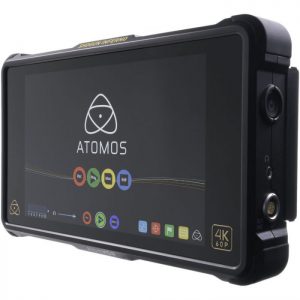
That 4:2:2 bit at the end there is a color designation for digital cameras. In comparison, most DSLRs use a 4:2:0 schema, and the color definition is not as good. 4:2:2 is more associated with higher end production, although 4:4:4 cameras and RAW acquisition are even better than that. So we were definitely hitting the very bottom of the acceptable color range, if that makes sense.
The Shogun records to flash media, so we had to purchase additional SSDs to use as “magazines.” A pile of 4Tb thunderbolt drives would be our backup system. Gavin purchased three rebuilt Zeiss lenses: a 23mm, 29mm, and a 50, all of which were extremely wide for this camera. Gavin and Sean cobbled together the lightest version of a Manfrotto shoulder rig that they could. Power for the system would be supplied by an Energizer laptop battery outfitted with a handmade voltage regulator going out to both a7s and Shogun. We worried about the heat dissipation on the Shogun, but we had done tests.
My sound kit was very spare. Though the Zoom F8 had just been released, I could not purchase one due to supply constraints. I ended up using a TASCAM DR70-D 4-track recorder, which proved to be more than enough for this shoot. We shot double system, with no audio feed into the pathetic A-to-D converters on the a7s or Shogun. Actors would be miked with Sennheiser G2s and doubled on the boom, using the stalwart Rode NTG-2. There are certainly better sounding mikes, but not that I can afford. Sometimes I would be able to run a director’s mix out to Gavin using one of the G2 transmitters, but mostly it would be me booming and monitoring on my own. I brought the Sony D50 stereo recorder as a backup and for taking stereo ambiences. I had my Sony MDR V900s to monitor, and I would make a double backup of the sound files on external hard drives of my own.
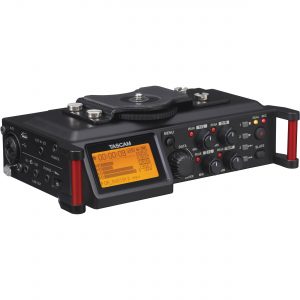
For lights we had a set of Neewer 1×1 LED panels as well as a couple of MicroPanels (about 8” x 5” maybe?), all battery powered. Sean had worked out a way to use incredibly low cost industrial LED panels designed for use under counters. These little strips could be attached by tape or velcro and also powered by AA batteries.
Add to that an assortment of grip and other various gear (gobo heads, stands, blackwrap, C47s, tape, duvetene, the usual film production junk) we had assembled 16 suitcases and 5 Pelican-style cases that would be carry-ons. That meant that each person traveling would carry two pieces of check-in luggage full of equipment (including their own clothes and personal effects), a carry-on Pelican case consisting of only equipment, and a “personal item,” usually a backpack or laptop bag. We knew the equipment carry-ons were heavier than regulations would allow, and we hoped no one would catch us.
More technical stuff
In the preceding weeks we had discussed a number of other technical issues that were worth considering. One was what colorspace to shoot in. As you might know, color in digital cinema is a tricky issue. Our own eyes perceive color at a fraction of the detail and resolution that they perceive light and dark areas. This has to do with the number of rods (luminescence) and cones (color perception) in our retinas. So that explains the 4:2:2 mentioned above. Clever engineers have worked out various compromises in camera color and image in order to get digital video that is not too cumbersome to work with nor too overwhelming for the technology to store on external media.
One of the key issues involved is whether to store color information on a linear scale (easy for computers, simpler to store) or a logarithmic scale (more like the eye sees, better reproduction and control). One of the things Sony was touting on the a7s was the new “SLog2” colorspace, which used logarithmic color the same way bigger and more expensive cameras did.
On the other hand were the legions of DSLR filmmakers, who had been experimenting with what is called “ETTR,” or “Exposure to the Right.” DSLR owners, with their 4:2:0 color, had noticed a lot of noise in their signals. The solution seemed to be to expose the image “to the right” of normal – in essence, overexposing. Later, when color correcting, they would turn the overall brightness of the image down, making the color noise go below the level of perception – essentially getting rid of it.
It’s a good theory, and one that is used all the time in sound recording. We often record sounds as hot as possible without distorting, regardless of what the source is. This is so that we get a clear, clean signal that we can then turn down in the mix, effectively making the noise at the bottom of the signal disappear. Would ETTR be beneficial? Some DSLR jocks were suggesting exposing with linear color and slamming the sensor for a better image. Even Blackmagic users were talking as though it were obviously the way to work, and the Blackmagic camera has a built-in logarithmic workflow that people love.
Our tests, however, came out a bit different. Not only was ETTR fairly dangerous in any situation where the contrast range was wide (the whites would clip) but the results of using a linear colorspace made the exposure latitude AND the color rather “brittle” in post production grading. When put in 10 or 12 bit space for adjusting the image, the linear footage showed banding, pixellation, and general breaking down with only minor adjustments. The Slog2 footage could take wild changes without losing shape.
My personal take is that this ETTR and this linear business, although seemingly sound, might work better with DSLR footage but it seems to be voodoo when applied to the a7s. We decided to go with a standard exposure and the Slog2. Now, this doesn’t mean we did not overexpose here and there. Hitting the negative and then timing it down has been a viable strategy since the film days, and it certainly works well in digital if you know what you are doing. But we did not adopt the DSLR strategy. We went with a high-end digital workflow instead.
And so…
Gavin approached me about the film almost a year ago – I honestly thought it would take longer to get it all together, and I had wished it would at least coincide with a vacation. I tried to convince him to put it off another year, but I can now see the wisdom of making it happen as soon as possible. The audaciousness of the project is a major factor in any interest surrounding it – how many art films have been shot in Myanmar outside of local productions? And how many with this relatively new camera? Shooting it a year later could be like trying to tout the novelty of a film you just shot on an iPhone. It’s already been done, done, done.
So it would occur in the middle of my semester and I would have to rearrange my schedule accordingly. Which, when it all came down to it, was perfectly fine. The combination of factors including my Thanksgiving break and time off for Veteran’s Day allowed me to adjust my syllabi and still make everything legal and under contract. It was a bit weird having a three week hole in the middle of the semester like that, but the students did not seem to mind. And I kind of liked “ending” my semester early and then going back as if I were having a little micro-semester that lasted three weeks.
Gavin went ahead of the crew and started a few weeks early. He had worked out a longer three-month visa because of his dad. Not having any Burmese family connections, I could only get the standard 28 days, not all of which I was even using. Gavin spent that time scouting locations, greasing palms (there seems to have been lots of this) and casting. Unbeknownst to me, he had also been “rewriting” rather recklessly, the troublesome fruits of which would become obstacles later. By the time I sat in the airport waiting for my flight to be called, I was blissfully unaware of anything distress.
Hae-Jin and Sean had gone ahead of me as well – they flew out on the 31st, Halloween night. Hae-Jin and I had attended our friend’s wedding that day, so we were already rushed and tired; we had not planned for her to go out this early. Their original flight was scheduled for November 1st – all in good time. As it turns out, China Airlines had decided to cancel the November 1st flight to Yangon, and neglected to tell anyone. We discovered the error when Sean tried to extend his stay in Taipei. But a few calls later, and they were booked a day earlier for a non-canceled flight.
Except they weren’t. China Airlines had goofed things up. So badly, in fact, that they thought Eric’s ticket did not exist. The three of them spent almost an hour at the ticket counter trying to sort it all out. This was not exactly auspicious.
Further on they had an even bigger nightmare when they got to Yangon. Customs officials took exception to our giant light panel cases, and they had to be bribed. We had planned for bribes, however, and our budget actually had a category for palm-greasing figured in.
I had heard about all this in the few days leading up to my own trip out.
Departure
Despite my general dread about leaving everything in my life and jumping into the project in medias res, I had some exciting unknowns to look forward to, and this was appealing to me. People around me, however, most of whom were quick to admit they could not find Myanmar on a map and did not know it was a country, cheerfully offered their opinions on how I would be kidnaped, beaten, and killed there. They all had stories of misfortunes befalling Americans who dared go to such a place.
Myanmar is not exactly dangerous. There is fighting near the jade mines, civil unrest based on “ethnic” tribal affiliations, and the possibility of typhus if you go stomping around the wrong areas (I got my shots, we all did just in case). But Maymyo was not a troubled area. It would be like fearing a trip to California because you heard there were shootings in Detroit.

Thankfully I’ve never been particularly drunk with these kinds of unreasonable fears. I had enough actual stuff to worry about without fantasies of this kind. My work kept me in L.A. for a few more days, and this had allowed me the maximum time to worry about the cat.
You see, Zero was quite old for a feline. She was 17. Chronic Kidney Disease had set in, and we had to give her subcutaneous fluids every other day. Which means, yes, we would stick our cat with a needle and give her liquid under the skin, resulting in a weird kind of hunchback that she absorbed almost immediately. The alternative to this therapy is to watch her die of either dehydration or intestinal blockage, neither of which I’m very interested in. Zero was even less interested in it.
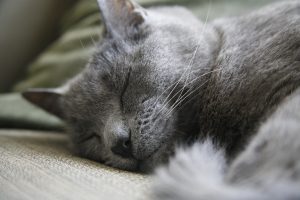
But Zero was nothing if not a hearty cat. She was legendary at the vet’s for lasting longer than she should have. We’d been irrigating her for over a year – maybe two? – and she showed no signs of slowing down. Still I worried that in my absence she’d wither away. That I’d miss her last moments as the disease took its final toll on her – after all, she may have been hearty, but death awaits us all.
My friend Jeanette would take care of her and Lulu, but I would think of her often when I’m away.
The few extra days provided me with the perfect opportunity to wrap up everything in my life that I could. I finished reading a couple books, mastered a friend’s DVD, laid out PDFs for Negativland’s releases on iTunes and made a DCP for another friend’s animated short.
Needless to say, I was exhausted by the time I started the thing that was supposed to exhaust me. I had eaten so poorly in the last few days. When Hae-Jin leaves me alone, which she regrettable does quite often for her work and travels, I revert to an animal state. I grunt incoherently and forget to shave. I eat whatever comes my way and forget how to be civilized. I must’ve eaten one dozen eggs in the last few days because that’s what we had left in the fridge.
So I must have been a total wreck when I got on that plane.
